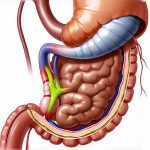Indigestion, also known as dyspepsia, is an incredibly common experience – one most people will encounter at least occasionally throughout their lives. It’s not a disease in itself, but rather a collection of uncomfortable symptoms that occur during or after eating. These can range from bloating and heartburn to nausea, feeling overly full (early satiety), and even stomach pain. While often triggered by dietary choices or stress, the underlying mechanisms of indigestion are complex and vary significantly between individuals. Many seek quick relief through medication, but increasingly, people are exploring alternative and complementary approaches to manage their symptoms – including surprisingly simple lifestyle changes like light exercise.
The conventional response to discomfort is often rest, perhaps lying down to let food “settle.” However, this can sometimes exacerbate indigestion, particularly if acid reflux is involved. The digestive system needs movement to function optimally. It’s a dynamic process involving muscular contractions and peristalsis – the wave-like motion that moves food through the digestive tract. Light exercise doesn’t need to be strenuous; it’s about stimulating this natural process and potentially alleviating some of the common causes of discomfort. This article will delve into how gentle physical activity may ease indigestion symptoms, exploring the science behind it and offering practical tips for incorporating it into your routine.
The Science Behind Exercise and Digestion
The relationship between exercise and digestion isn’t always intuitive. It’s easy to assume strenuous activity during or immediately after eating would be detrimental. And that can certainly be true! However, light exercise acts differently. Firstly, it stimulates peristalsis – the rhythmic muscle contractions that push food through your digestive system. A sluggish digestive tract is a key contributor to bloating and feelings of fullness. Gentle movement helps keep things moving, reducing these uncomfortable sensations. Secondly, exercise can help reduce stress levels. Stress is a well-known trigger for indigestion; it impacts gut motility and acid production, often in ways that worsen symptoms. Finally, physical activity can improve blood flow throughout the body, including to the digestive system, potentially enhancing its function.
It’s important to distinguish between different types of exercise. High-intensity workouts or activities immediately post-meal are more likely to disrupt digestion. Light exercise, however – walking, yoga, gentle stretching, even light housework – is far less disruptive and can offer tangible benefits. The key is timing and intensity. Waiting at least 20-30 minutes after eating before engaging in light activity is generally recommended. This allows the initial stages of digestion to begin without being interrupted by physical exertion.
The gut-brain axis plays a crucial role here too. This bidirectional communication system connects the digestive tract with the brain. Exercise positively influences this axis, reducing inflammation and improving mood – both factors that can significantly impact digestive health. Chronic indigestion isn’t just about what you eat; it’s often intertwined with emotional wellbeing and stress management, areas where light exercise shines. If your gut issues are related to broader wellbeing concerns, consider exploring can gut symptoms be a sign of burnout?
Types of Light Exercise for Indigestion Relief
Choosing the right type of exercise is crucial when managing indigestion. The goal is to stimulate digestion without causing further discomfort or exacerbating symptoms. Walking is arguably one of the most accessible and effective options. A leisurely 15-30 minute walk after a meal can significantly aid digestion. Yoga, particularly restorative poses and gentle twists, can also be incredibly beneficial. These movements gently massage abdominal organs, promoting motility and relieving bloating. Pilates, with its focus on core engagement and controlled movements, can similarly support digestive function.
Here are some specific exercises to consider:
– Walking: A brisk walk (not strenuous) is easily incorporated into daily life. Aim for 15-30 minutes post-meal.
– Yoga: Poses like Child’s Pose, Gentle Spinal Twist, and Cat-Cow can gently stimulate digestion.
– Pilates: Core-strengthening exercises can support abdominal function.
– Cycling (light): A gentle bike ride can be helpful, but avoid strenuous uphill climbs immediately after eating.
Remember to listen to your body. If an exercise causes pain or discomfort, stop immediately. The intensity should always remain light – you shouldn’t be breathless or straining during the activity. Experiment with different options to find what works best for you and your individual needs. It’s also vital to avoid exercises that involve bouncing or jarring movements, as these can sometimes worsen digestive upset. If food intolerance is a factor, can exercise reduce food intolerance symptoms?
Timing and Consistency are Key
The benefits of light exercise for indigestion aren’t realized overnight; consistency is paramount. Sporadic bursts of activity won’t yield the same results as incorporating regular gentle movement into your routine. Aim to incorporate some form of light exercise most days of the week, even if it’s just a 10-15 minute walk during your lunch break. Timing also plays a vital role. As previously mentioned, waiting at least 20-30 minutes after eating before exercising is generally advisable. This allows initial digestion to begin.
Here’s a suggested approach:
1. Post-Meal Movement: Integrate a short walk (15-20 minutes) into your routine after lunch and dinner.
2. Morning Routine: Start your day with gentle stretching or yoga poses.
3. Regularity: Strive for at least 30 minutes of light physical activity most days of the week.
It’s also important to consider when you experience indigestion symptoms. If bloating is a primary concern, exercising after meals can be particularly helpful in moving gas through your digestive system. If heartburn is an issue, avoid exercises that involve bending over or lying down immediately after eating. Pay attention to how your body responds and adjust your exercise routine accordingly. Understanding digestive rhythm loss from a lack of morning light can also help you optimize timing.
Beyond Exercise: A Holistic Approach
While light exercise can be a valuable tool for managing indigestion symptoms, it’s rarely a complete solution on its own. A holistic approach, addressing multiple factors, is often more effective. This includes dietary modifications – identifying and avoiding trigger foods (such as spicy or fatty foods, caffeine, alcohol), eating smaller, more frequent meals, and staying adequately hydrated. Stress management techniques like mindfulness, meditation, or deep breathing exercises can also significantly reduce indigestion symptoms.
Furthermore, consider these points:
– Identify Triggers: Keep a food diary to pinpoint foods that worsen your symptoms.
– Hydration: Drink plenty of water throughout the day to aid digestion.
– Stress Reduction: Incorporate stress-reducing activities into your daily routine.
– Medical Evaluation: If indigestion is severe or persistent, consult a healthcare professional to rule out underlying medical conditions.
Light exercise should be viewed as one component of a broader strategy for digestive health. It’s about creating sustainable lifestyle changes that support overall wellbeing and reduce the frequency and severity of indigestion symptoms. It’s not about replacing medical treatment; it’s about complementing it with proactive self-care strategies. If you are concerned about underlying issues, how mild symptoms can lead to early-stage testing? Exploring the impact of environmental factors such as light may also be helpful – consider digestive delay caused by loss of daily natural light. In some cases, even external stimuli like music or light affect gut symptoms. Finally, don’t underestimate the power of a gut reset diet.


















